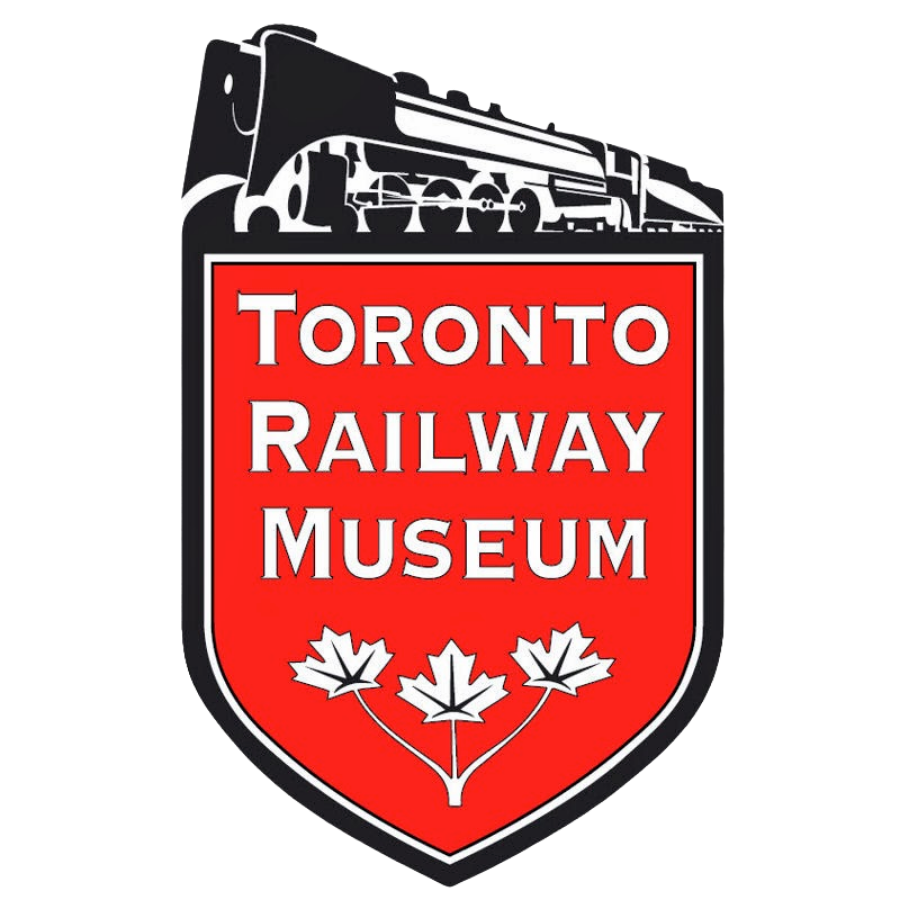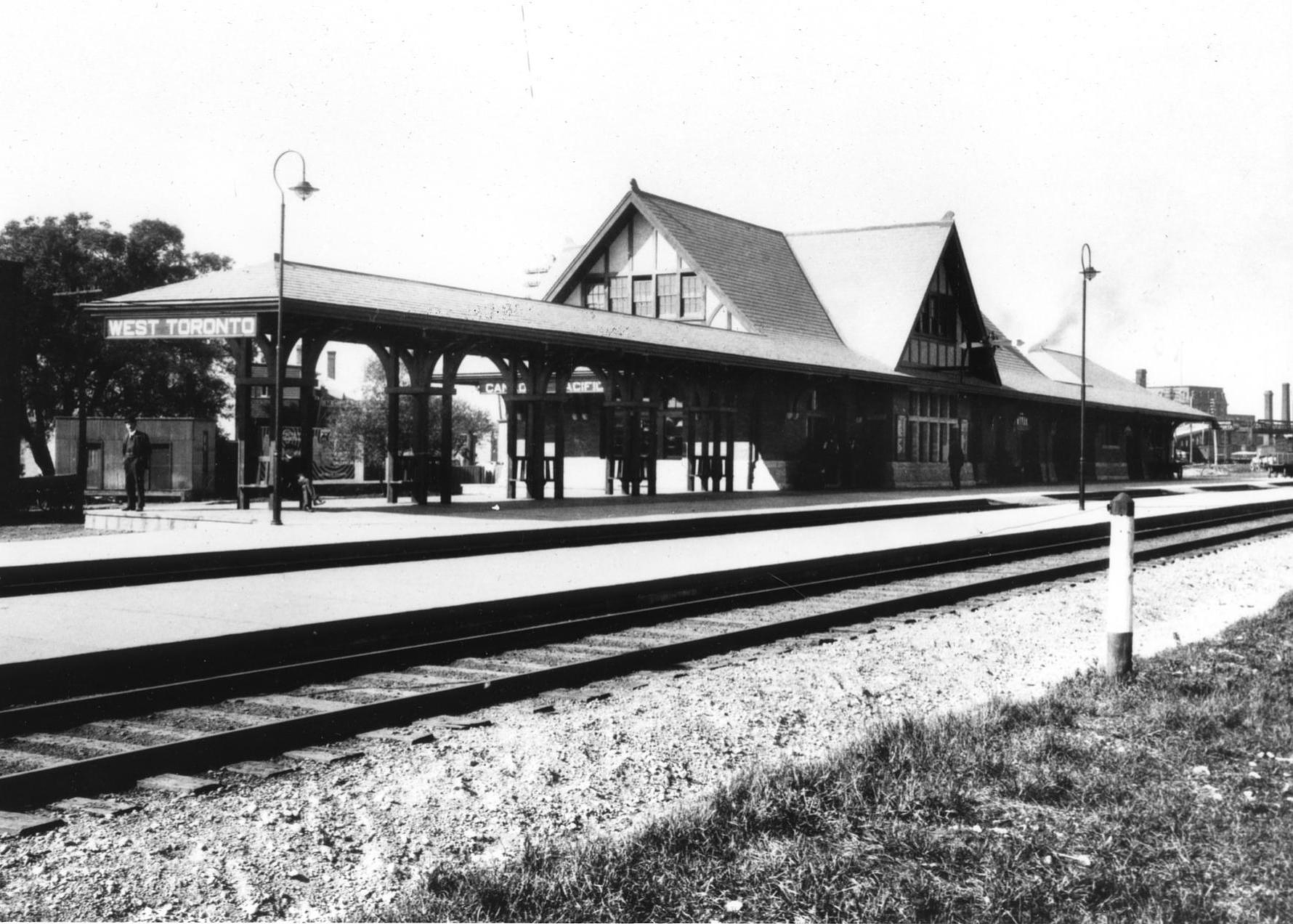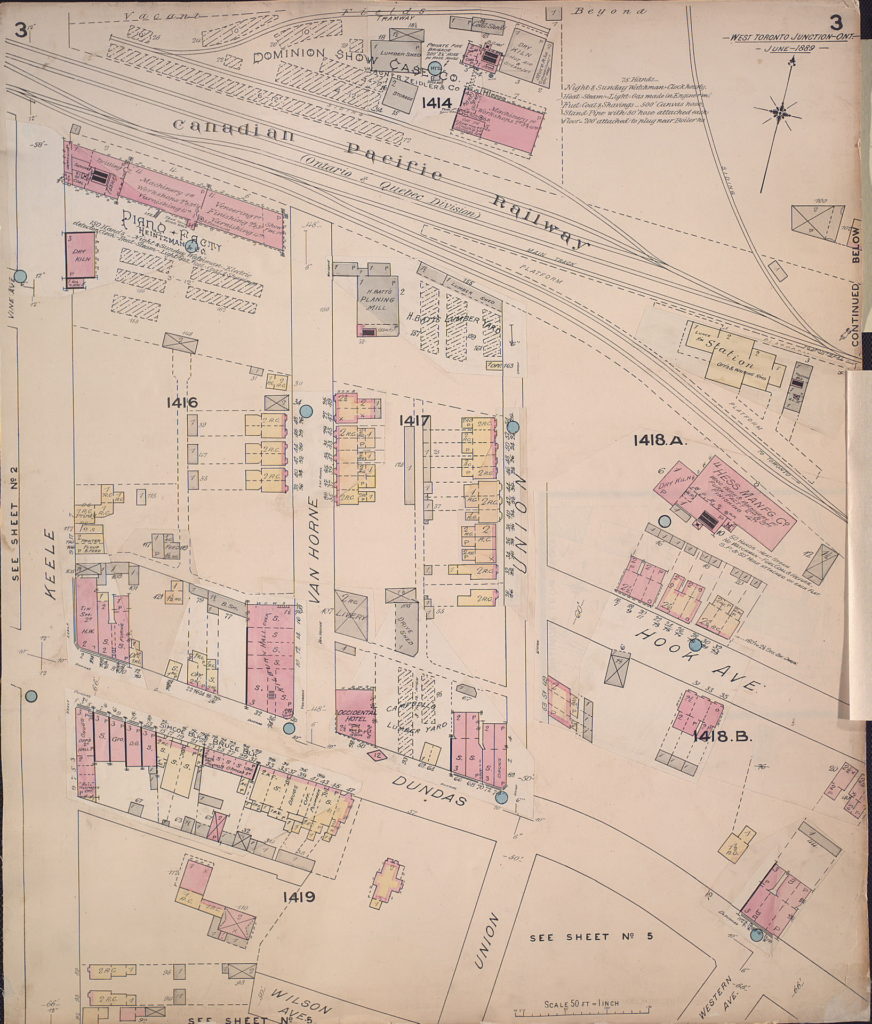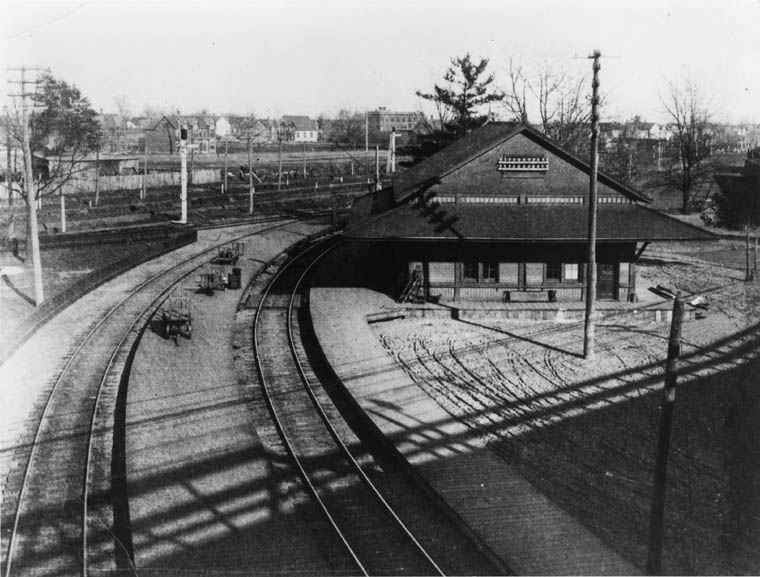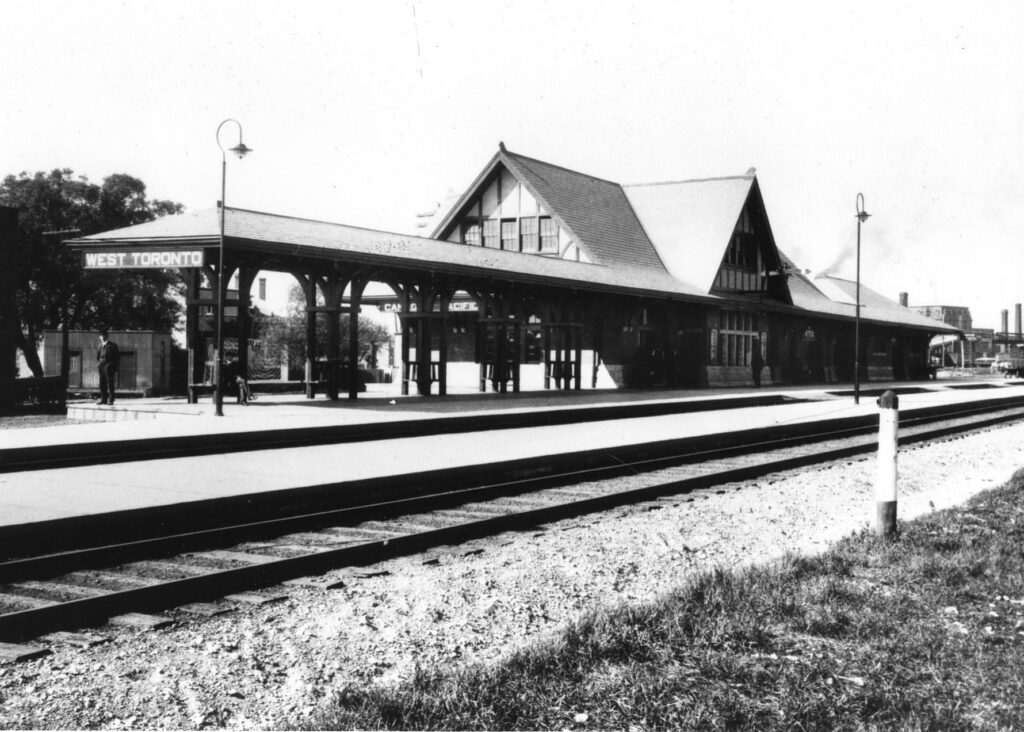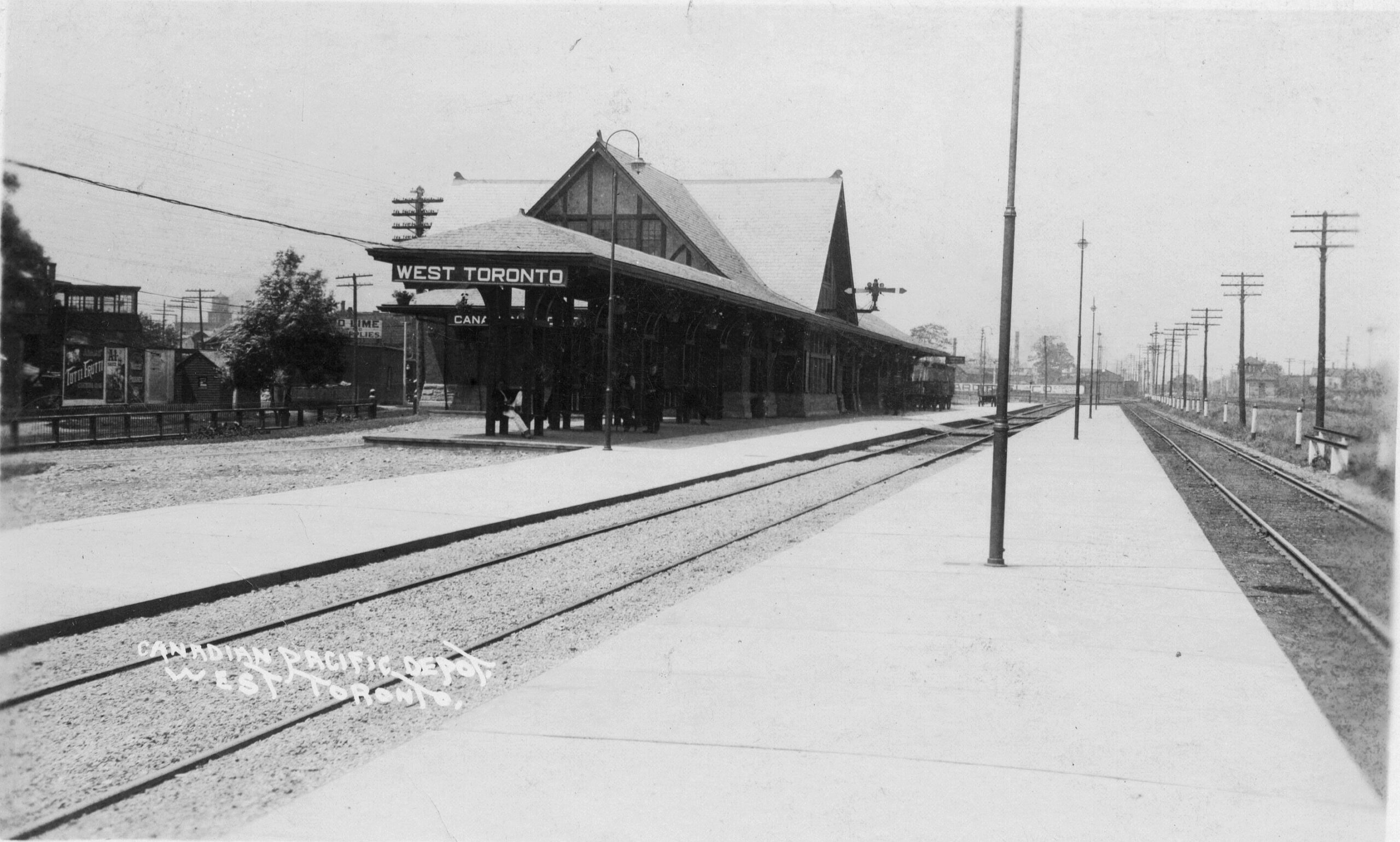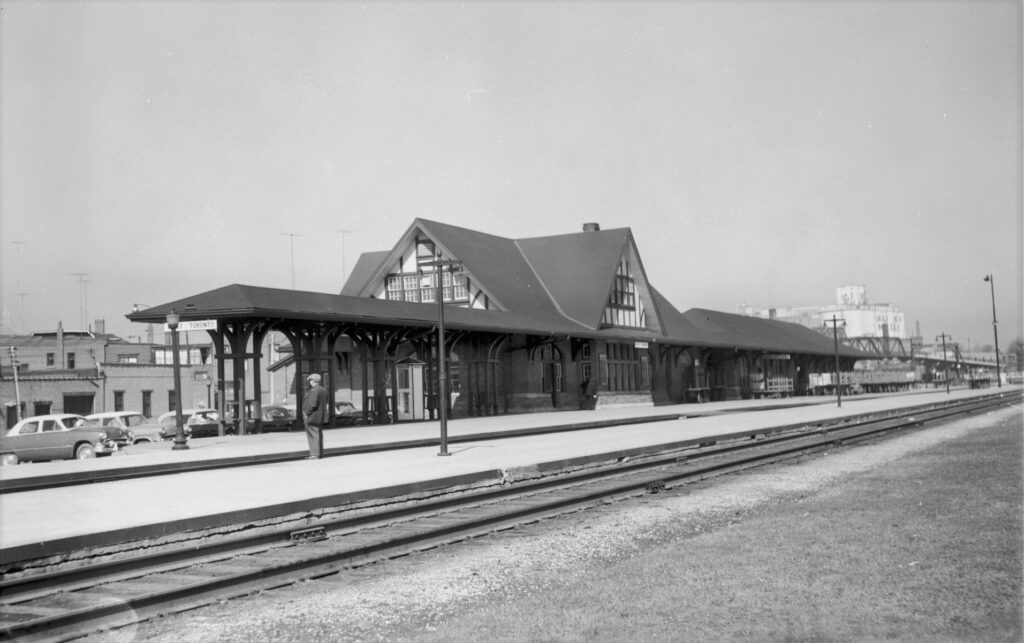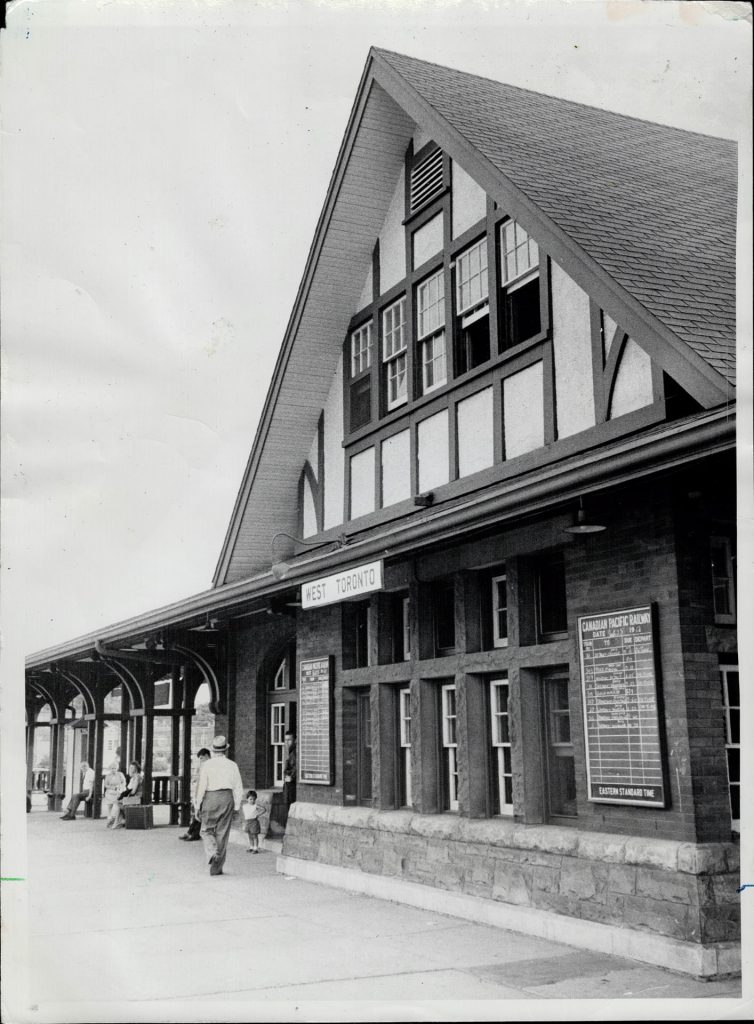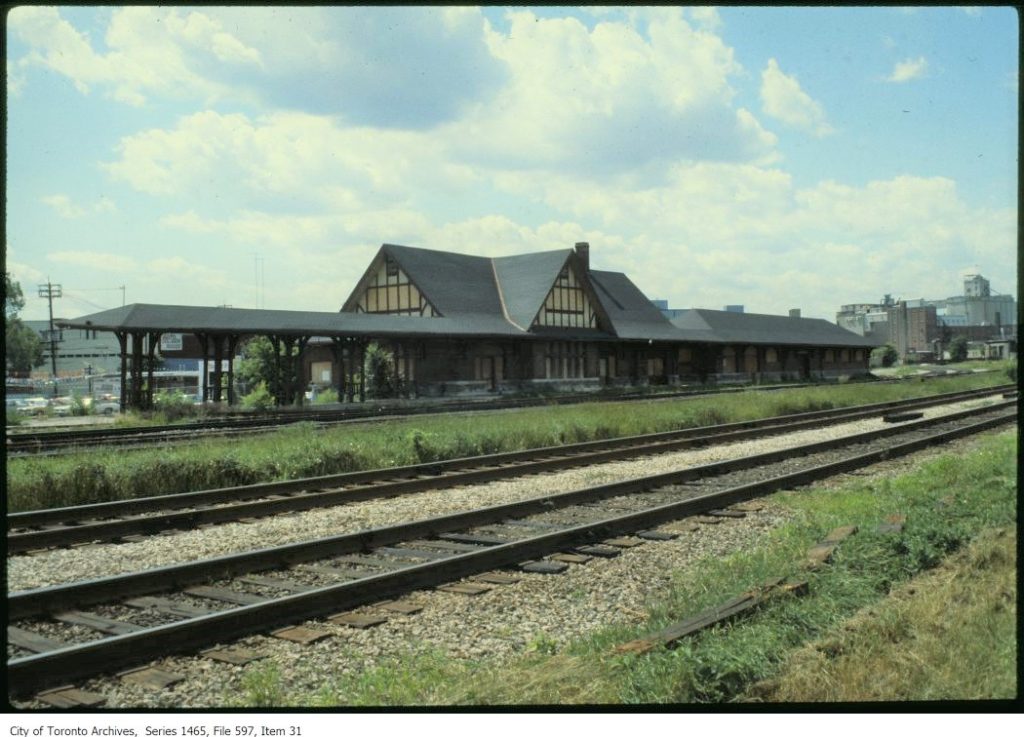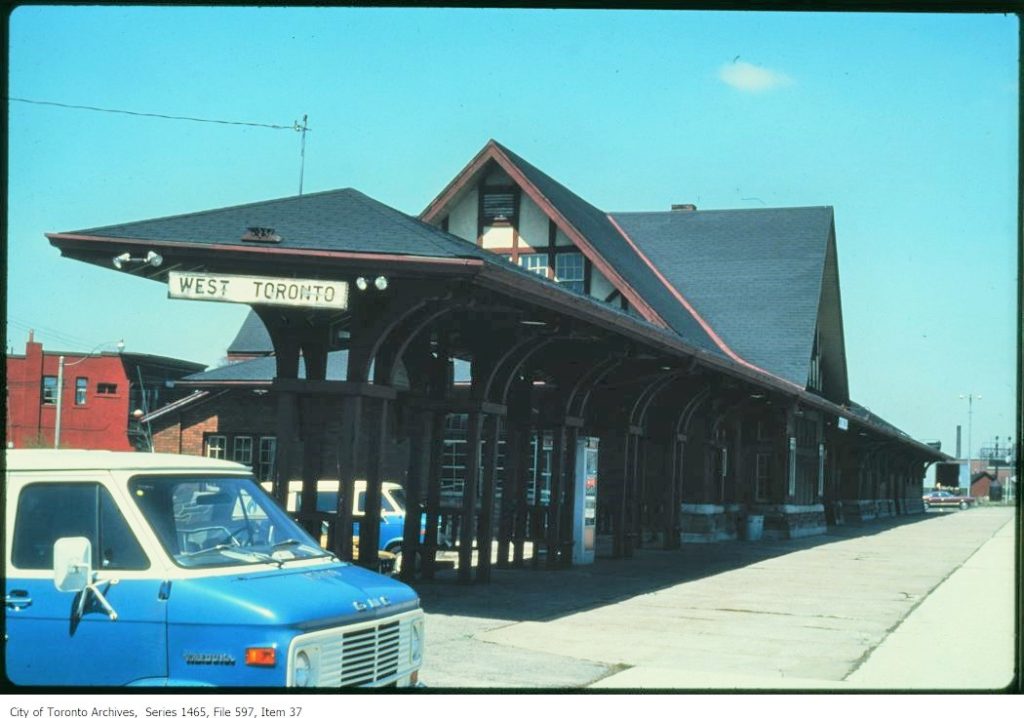Summary
The first railway to be built through modern-day West Toronto was the Grand Trunk Railway in 1855, but its nearest station was located further north towards the small community of Carleton – now the Toronto neighbourhood of Carleton Village. It wasn’t until about two decades later that West Toronto Junction was formed through the arrival of numerous other competing lines, creating the conditions necessary for the first West Toronto Station to be built. The next railway to arrive after the Grand Trunk was the narrow-gauge Toronto, Grey & Bruce Railway, which ran parallel to the Grand Trunk’s northwest-southeast trajectory. They were soon followed by the Credit Valley Railway, which arrived from the west and made a sharp right turn near Keele and Dundas to parallel the Grand Trunk into Toronto. The last to arrive was the Ontario & Quebec Railway, a proxy of the Canadian Pacific Railway, which ran parallel along the north side of Dupont Street and crossed both the Toronto, Grey & Bruce and Grand Trunk at grade before connecting with the Credit Valley at the aforementioned curve. This location then became known as West Toronto Junction.
The first West Toronto Station was opened in August 1883 by the Credit Valley Railway. It was located in the notch between the Credit Valley and Ontario & Quebec lines at the west side of the junction, with platforms on each side for both railroads. The specifics of the arrangement between these companies pertaining to the station are unknown, though its primary purpose was explicitly to facilitate connections for passengers from one railroad to the other. The presence of the station combined with abundant rail access for new industries caused the population surrounding the junction to increase rapidly. The Village of West Toronto Junction was established in 1884, and in 1889 it merged with the villages of Carleton and Davenport to form the Town of West Toronto Junction.
The Credit Valley Railway was initially the only railroad serving West Toronto Station as the Ontario & Quebec was still under construction and regular service hadn’t commenced yet. Some sources suggest a temporary passenger service was operated in September 1883 by the O&Q from a temporary station at North Toronto to the Credit Valley station at Parkdale for the Toronto Industrial Exhibition. This service would have made use of the new West Toronto Station as an intermediate stop. On November 30th, 1883, the Credit Valley Railway was leased by the Ontario & Quebec Railway – functionally making it an extension of the Canadian Pacific Railway in all but name. By early 1884, a total of eight trains stopped at West Toronto per day. At this point in time, the former Toronto, Grey & Bruce route to Owen Sound was an important rail artery connecting Toronto to the west. Lacking its own rail-only route north from Toronto, Canadian Pacific partly relied on its Great Lakes steamships to carry this traffic from points south and southwest. Due to the way the first West Toronto Station was situated, trains taking the direct route to the steamship docks at Owen Sound couldn’t stop there. Passengers would instead have to take a more roundabout way through Brampton and Orangeville. Partly to remediate this inconvenience, the original station at West Toronto was replaced with a new one located a short distance further east in 1898. It was positioned next to a new track connecting the former Credit Valley and Toronto, Grey & Bruce lines across the junction.
For one reason or another it became clear that the second station was inadequate as Canadian Pacific announced plans to replace it as early as 1903. It would take them a little longer to do so, ultimately going through with it in 1911 as part of broader infrastructure upgrades across its system. This iteration was by far the largest of the three stations, having a large main building with a separate express building connected through a shared roof. A long canopy extended to the south along the platform to protect passengers from the elements. For most of its lifetime it served as a busy secondary terminal for Toronto’s west end. A total of 32 passenger trains stopped at West Toronto each day in 1921, and in 1955 it also became a stop for Canadian Pacific’s transcontinental streamliner The Canadian. Unfortunately, passenger ridership began to decline as the popularization of automobiles and air travel took hold in the postwar era. This was worsened by the completion of Highway 400 and Highway 401 at around the same time, which ran roughly parallel with the two main routes serving West Toronto Station. Budd Rail Diesel Cars began to replace much of the conventional equipment used on commuter and regional trains that stopped there, as they were substantially more economical to operate. This wouldn’t be enough to counteract the ridership decline, and by 1961 the number of trains to stop at West Toronto dropped to 21. A further reduction of service to 10 trains per day occurred by 1966. The last commuter train departed West Toronto on July 3rd, 1971, leaving the transcontinental Canadian as the only service remaining. This, too, would end on October 28th, 1978, closing West Toronto Station to passengers for good.
While the station sat unused, locals organized to preserve it so that it could one day be readapted for the benefit of the community. The West Toronto Junction Historical Society was formed in 1980 for this purpose. However, the building was still owned by Canadian Pacific who had to pay tax on the property during a time when cost-cutting was an especially popular course of action for railway companies in North America. Canadian Pacific sent a demolition crew to tear down the station before sunrise on the morning of November 25th, 1982. The structure was completely destroyed before members of the community woke up and realized what was going on, sparking a public relations disaster for CP who were still recovering from the backlash caused by a derailment in Mississauga in 1979. The demolition prompted Toronto Mayor Art Eggleton to arrive on the scene that morning, after which he threatened to halt the planned development of CP-owned land near downtown Toronto. It was found that Canadian Pacific had failed to acquire a permit for the demolition and the actions they took in removing West Toronto Station were illegal. Save for one track that was given a wider curvature to accommodate GO trains, the site is now used for storage and little else.
Two authentic schedule boards from this station were saved and are now on display at the Toronto Railway Museum.
Condensed Station Info:
| Location: | Served By: | Current State: | Date Built: | Date Demolished: |
| Old Weston Road at Dupont Street | Credit Valley (1883-1883) Canadian Pacific (1883 – 1978) | Demolished (All) | 1883 (First) 1898 (Second) 1911 (Third) | 1898 (First) 1911 (Second) 1982 (Third) |

